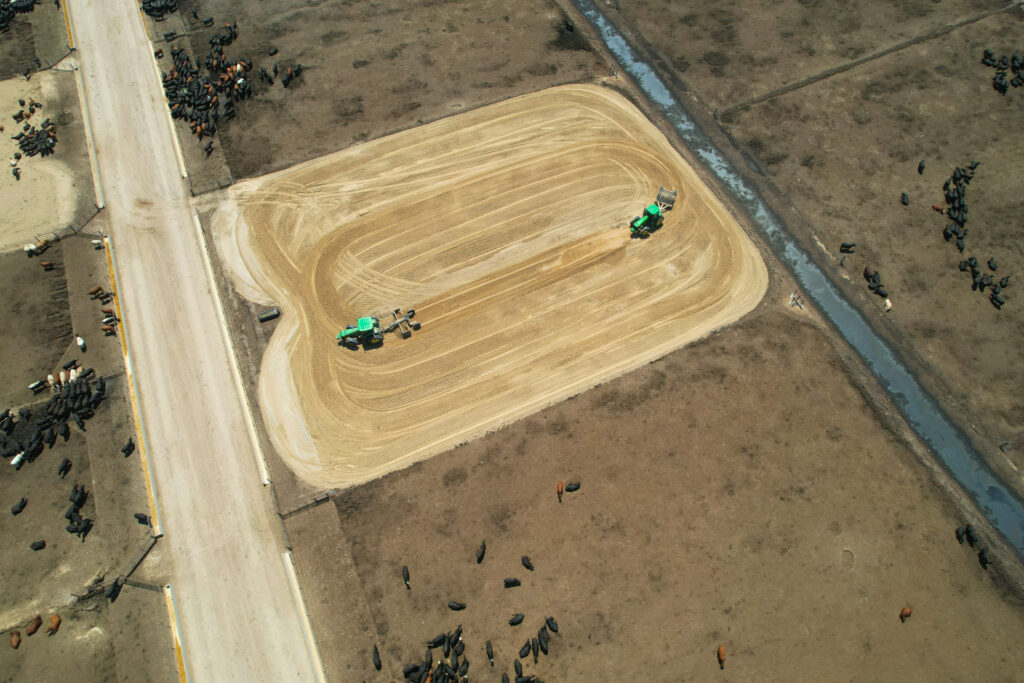
Preparing for a construction project in 2024? The time to initiate the process is now. Expanding an existing livestock facility or establishing a new one requires substantial time and effort even before groundbreaking. Whether you’re looking to augment your current feedlot, venture into beef confinement barns, or enhance feed storage facilities, here are ten crucial considerations:
1. County Zoning: If you plan to increase your facility’s headcount, navigating through county zoning procedures might be necessary. The specifics vary significantly based on your operation’s county and its proximity to various Concentrated Animal Feeding Operation (CAFO) size thresholds.
2. State Permitting: Expanding your livestock facility’s total headcount capacity necessitates a major modification permit. This procedure entails preliminary design, general layouts, owner consultations for design preferences, and permit-level design. Upon completion of permit-level design, the major modification request is submitted to the state. Approval duration ranges from one month to 180 days, contingent on the modification’s scale. This also applies to some modifications of the existing Livestock Waste Containment Facility (LWCF), even without headcount increments.
3. Design Timeline: At Settje, we prioritize operation-centric design. This involves collaborative design meetings with the owner throughout the design phase to ensure that proposed solutions align with your operational needs. For new projects or renovations, the process commences with a site visit. Following the visit, we formulate 1-3 “master plan” options accompanied by corresponding budgets if required. Only once a conceptual layout is chosen can we proceed to permit-level or bid document design, spanning 2-6 weeks.
4. Bid Timeline: Upon generating a set of bid documents, the project can be put out for bidding. We typically solicit bids from at least three subcontractors for every trade to attain competitive pricing, while also accommodating contractor schedules.
5. Contractor Schedules: It’s widely recognized that trade-focused companies are exceedingly occupied, given the economic climate and dearth of skilled labor. Certain contractors are booked solid for up to six months or more. To ensure optimal contractor selection in terms of price and quality, we advise prospective builders to anticipate a construction “start date” at least three months ahead.
6. Vendor Lead Times: While lead times and supply chain disruptions from the “Covid era” have largely normalized, some exceptions persist. Steel and wood building lead times from the point of purchase are currently spanning 4-8 weeks. Remember that design and engineering for a specific project must occur before a building can be scheduled for production. Another significant lead time we commonly encounter pertains to sizable electrical components, necessitating 3-9 months.
7. Construction Timing: Typically, undertaking construction in the Midwest during winter entails uncertainty. Although above-ground construction and building erection can proceed throughout the winter months, civil construction usually halts from December to mid-March. Consequently, any feedlot civil construction should conclude before December, or you should strategize to commence after winter. Conversely, tasks like fencing can be undertaken throughout the winter. For confinement barn construction, the optimal timeline involves completing all civil and concrete work by November. Subsequently, slat placement, building erection, and finish work can unfold through winter sans project delays.
Your meticulous attention to these considerations will undoubtedly facilitate a successful and efficient construction venture in the coming year.
